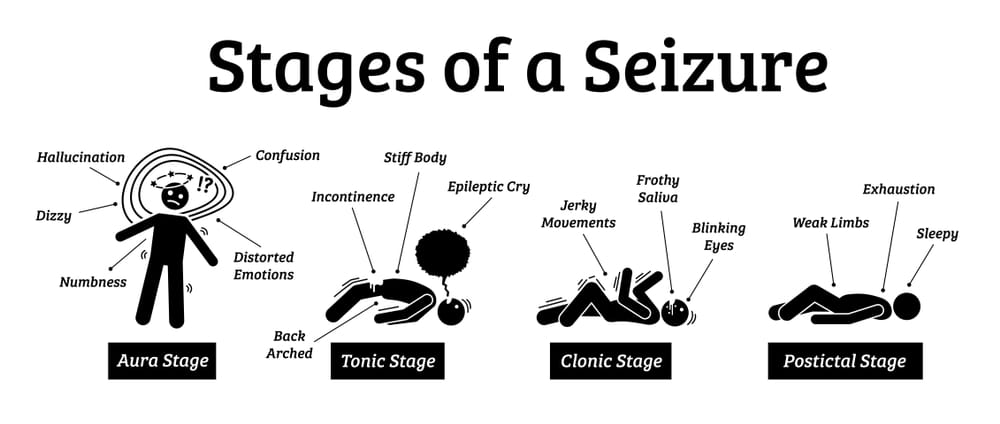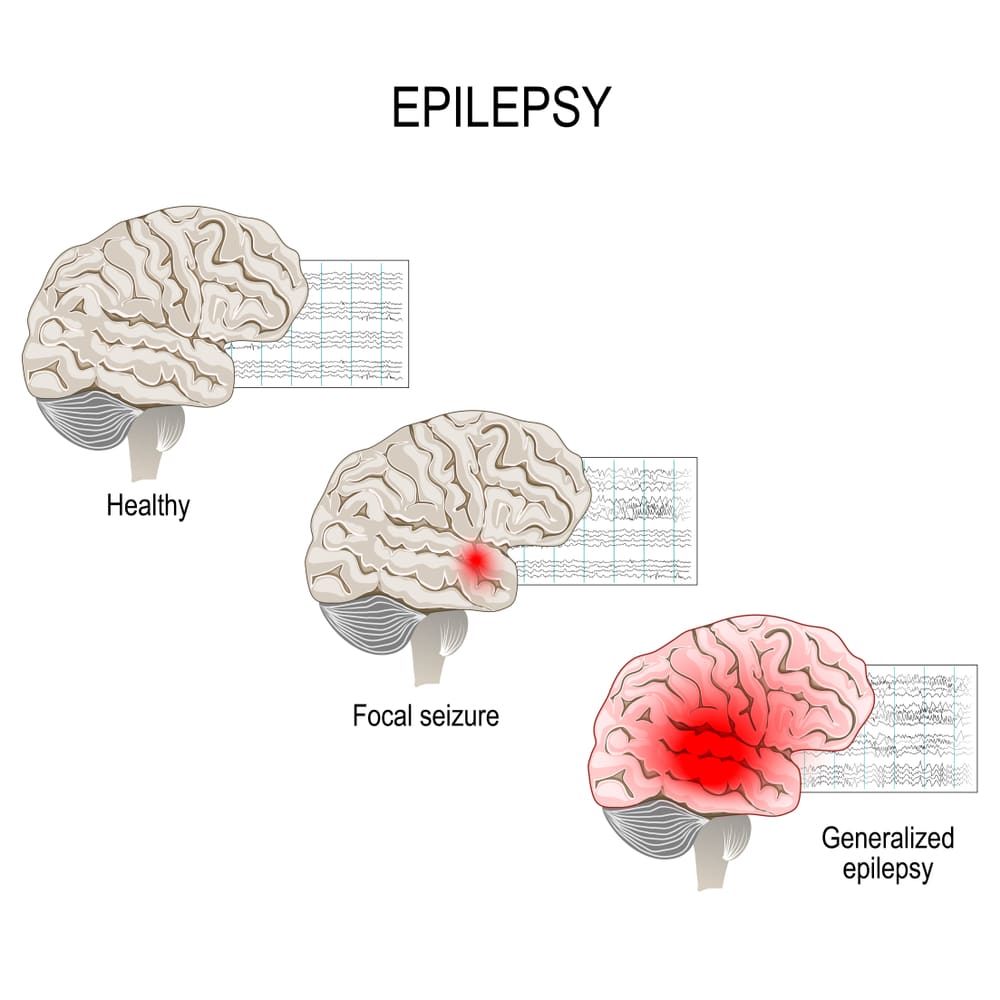Seizure is one of the main symptoms of epilepsy.

Types of seizures
There are many different types of seizures which are described based on the pattern of body movement or feeling or behaviour of the individual during the seizure.
The most recent international league against epilepsy (ILAE) seizure classification is based on 3 key features: Where seizures begin in the brain, Level of awareness during a seizure, and other features of seizures.
Therefore, seizures are classified as
Focal aware
If the person has a seizure involving only a side of the brain and is aware of his/her environment all through the seizure ie awareness remains intact. This was formerly called simple partial seizures.
Focal with impaired awareness
If the person has a seizure involving only a side of the brain and becomes unaware of his/her environment at any point in time during the course of the seizure. This was previously called complex partial seizures.

Generalized seizures
This type is generally associated with loss of consciousness all through the duration of the seizure. It may be associated with confusion after the event – post ictal confusion.
Focal awareness unknown
This term is used to describe focal (or partial) seizures that occur at night when a person is sleeping hence awareness cannot be ascertained by the individual or bed partner. It also covers seizures in which the onset was not witnessed.
Based on other features of seizures, it is classified as either motor or non-motor seizures.
Motor seizure
Is the common type that is easy to recognize as it involves twitching, going limp, stiffening or jerking body movements. Motor seizures may also manifest as automatisms which are repetitive non-purposeful movements which may appear to be normal. Automatisms include movements such as lip-smacking, repetitive hand movements like hand rubbing or nose rubbing, running or walking aimlessly.
Motor seizures may be focal or generalized or focal to bilateral. Focal to bilateral seizures are observed to have started with jerking, stiffening, limpness or twitching of one side of the limbs or face and then followed by a generalized twitching, jerking, stretching or fainting.
Generalised motor seizures are further classified as
Tonic
this is described as stretching and stiffening of limbs, neck and body may be associated with shaking that resembles shivering.
tonic-clonic
there are alternating stretching and folding of the limbs at the elbow /wrist and knee/ankle.
clonic,: there is flexion(folding) of the limbs towards the trunk with associated shaking.
Myoclonic
this is described as a sudden jerk of a part of the body which is usually irregular and has no rhythm. (like when one is startled without any startling stimulus). It may also be described as clumsiness example dropping items from the hands unknowingly or bumping into objects.
myoclonic-tonic-clonic:
This is a combination of sudden jerks, stretching, stiffening and folding of the limbs.
Atonic:
this is described as suddenly going limp and falling to the floor. It is usually associated with severe injuries and fractures.
Myoclonic-atonic:
This is a combination of sudden jerks and then loss of tone the individual goes limp.
Note that any of these seizure types may be preceded by a loud cry and accompanied by upward rolling of the eyes, falls, tongue biting (usually the sides of the tongue), excessive salivation and foaming from the mouth as well as incontinence of urine and/ or stool.
Absence seizures
are a type of generalized seizures lasting less than a few seconds. It is common in children and not usually associated with confusion after the seizure. It may manifest as automatisms or blank staring in which the person appears to be lost in thought, afterwards continues their activity from where they stopped. They may not even realise they had a seizure.
Absence seizures are classified as
- typical
- atypical
-eyelid myoclonia:
this refers to myoclonus involving only the eyelids.
-myoclonic
this is described as a sudden jerk of a part of the body (like when one is startled without any startling stimulus). It may also be described as clumsiness example dropping items from the hands unknowingly or bumping into objects.
Focal motor seizures are further classified as
Tonic focal motor seizures
this is described as stretching and stiffening of limbs, neck and body.may be associated with shaking that resembles shivering.
Clonic focal motor seizures
Described as flexion(folding) of the limbs towards the trunk with associated shaking
Atonic focal motor seizures
this is described as suddenly going limp and falling to the floor. It is usually associated with severe injuries and fractures
Hyperkinetic
Hyperkinetic seizures are characterized by excessive muscular movements such as thrashing about/ flinging of arms and legs, pedalling as well as hip thrusting. It is common in frontal lobe seizures.
Myoclonic focal motor seizures
this is described as a sudden jerk of a part of the body (like when one is startled without any startling stimulus). It may also be described as clumsiness example dropping items from the hands unknowingly or bumping into objects.
Epileptic spasms
Are usually seen in young children. It is described as flexion of the waist with flexion or extension of the arms occurring together.
Focal non-motor seizures are characterized by
- cessation of movement or talking: Behavioral arrest:
- changes in sensations eg taste, smell: sensory seizures,
- changes in Autonomic seizures
- changes in emotions eg dread, fear, pleasure and anxiety: emotional seizures,
- changes in thinking eg déjà vu and Jamais vu: cognitive seizures and
- changes in experiences eg sweating, gastrointestinal sensation, chills and goosebumps, heart rate, blood pressure, sweating:: autonomic seizures.
Most of these non-motor seizures were formally thought to be epilepsy auras but it is now known that epileptiform discharges are present during the so called ‘auras’, therefore the auras actually represent seizures.